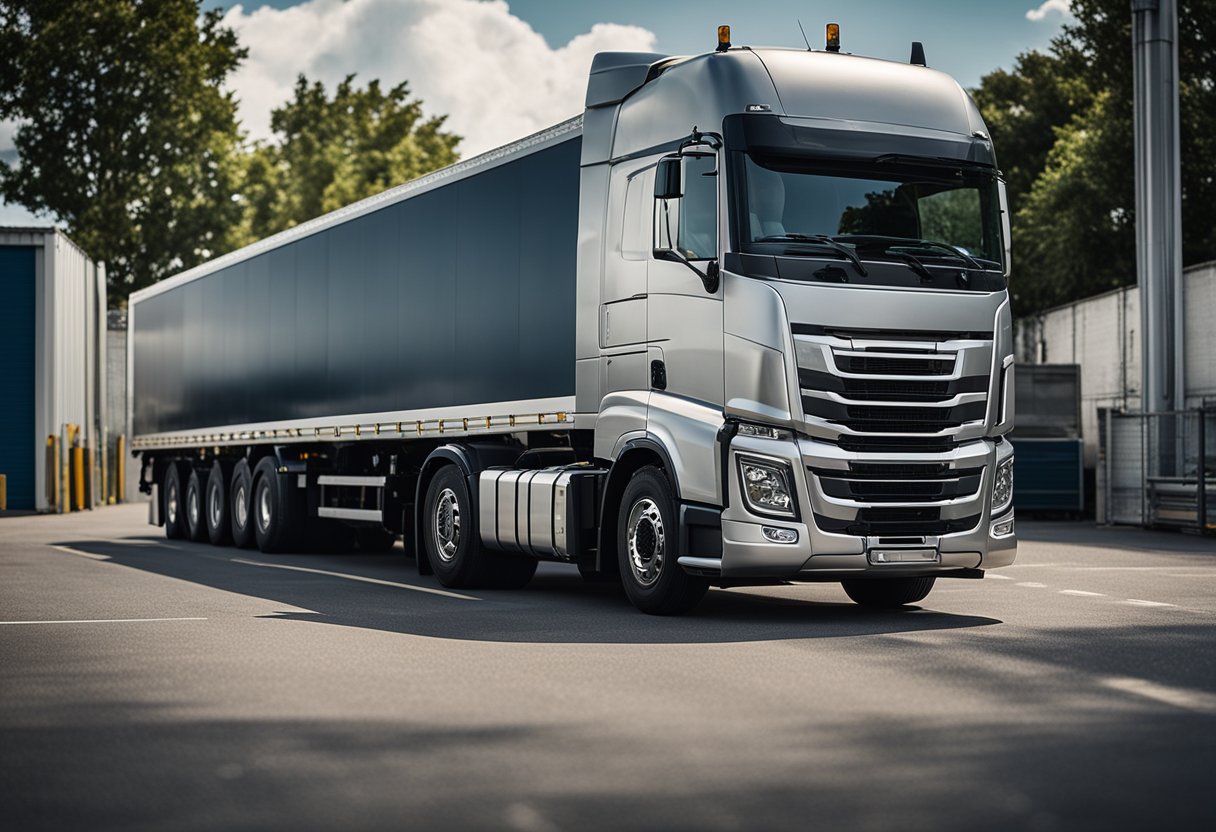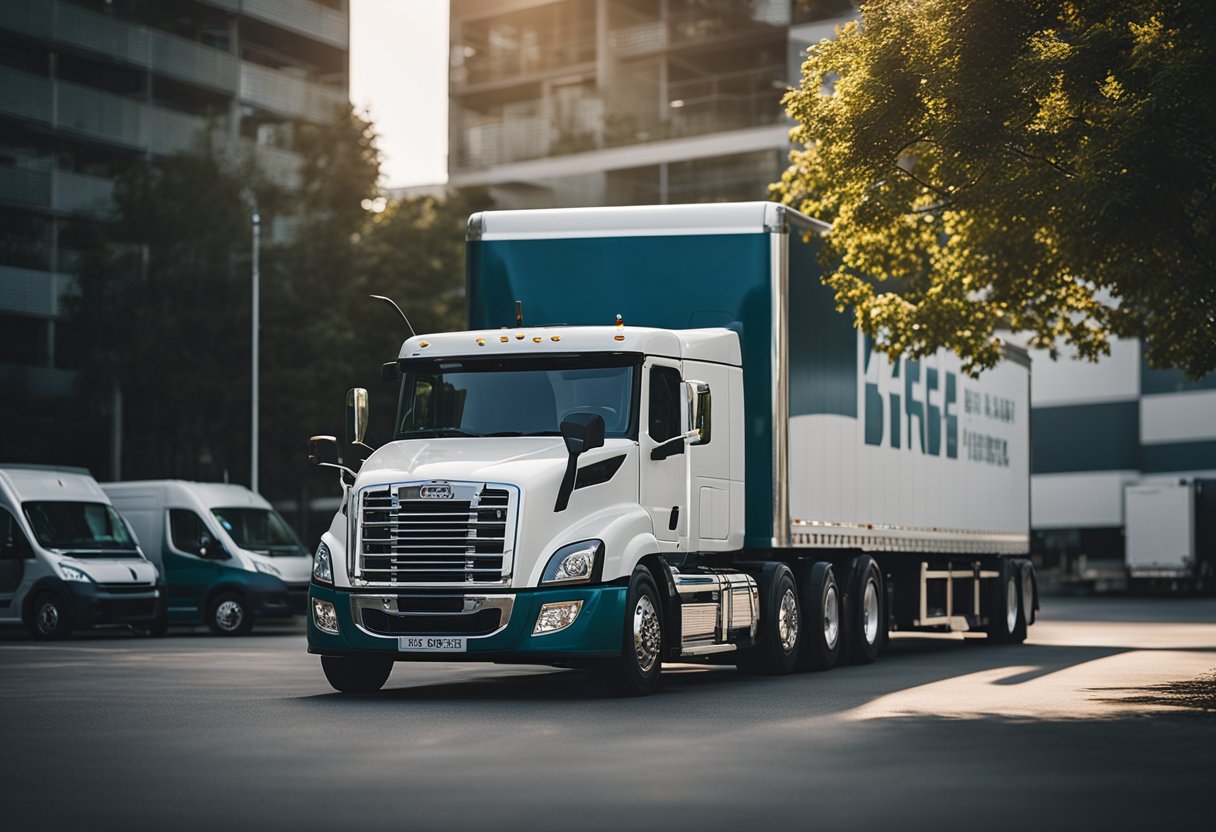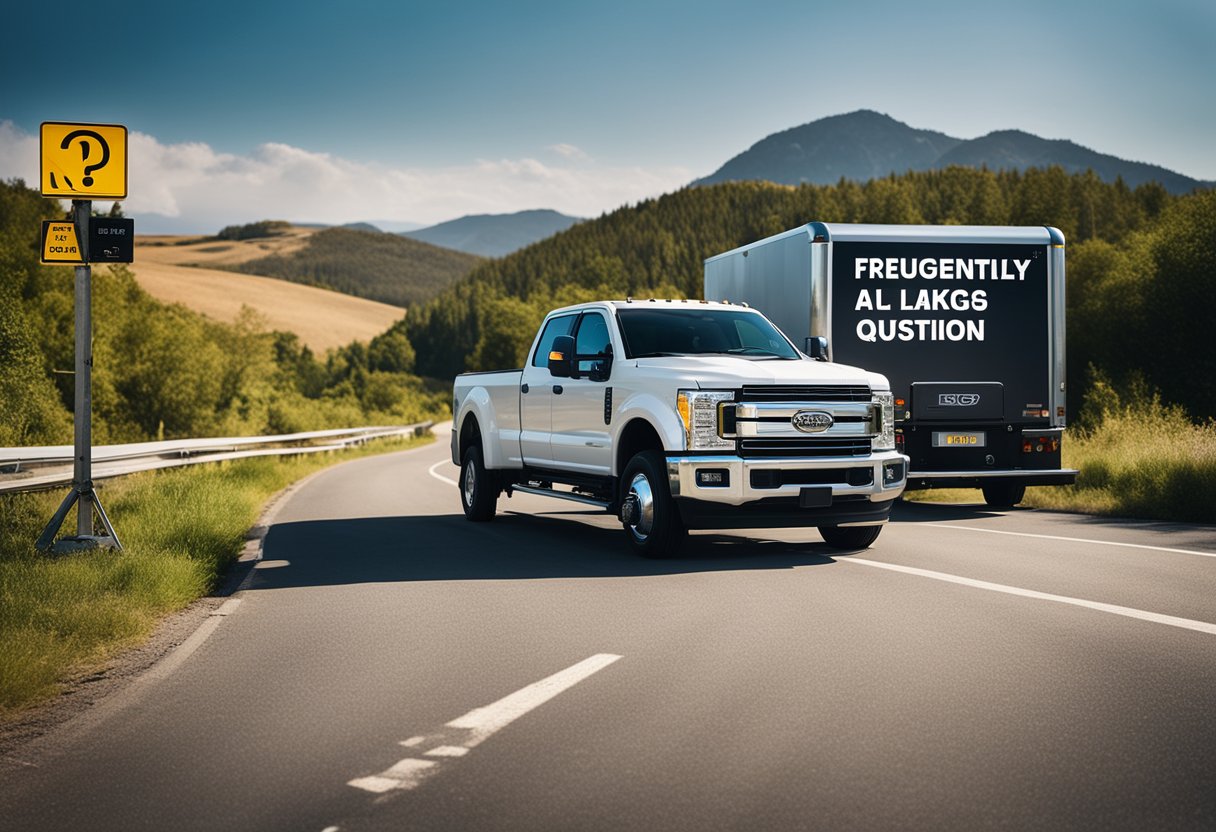When discussing the length of a truck, a primary consideration is that “truck” encompasses a wide range of commercial vehicles designed for various purposes, from transporting small loads within a city to hauling heavy cargo over long distances. The length of a truck can therefore vary significantly based on its type, make, and model. Standard commercial trucks used in city deliveries can be substantially shorter than their long-haul counterparts, which are designed for efficiency and maximum cargo capacity on interstate routes.

Regulatory factors also play a role in determining the maximum allowed length for trucks, with specific guidelines differing from one region to another. These regulations ensure safety on roads and bridges, maintaining a balance between the operational needs of trucks and the overall traffic ecosystem. In practice, the length of a truck often reflects its intended use, with certain configurations optimized for maneuverability in tight spaces, and others maximizing cargo space within legal limits. It’s important for those interested in the commercial vehicle industry or looking to acquire a truck to understand these variations and how they fit into the larger context of truck operation and regulation.
Contents
Key Takeaways
- Truck lengths vary widely to suit different commercial needs and to comply with regional regulations.
- A truck’s length is influenced by its type, functionality, and the specific requirements of its intended cargo or service area.
- Regulations and practical considerations like maneuverability and cargo capacity are crucial factors in determining truck dimensions.
Truck Types and Classifications
https://www.youtube.com/watch?v=dtDCPvV5ROQ&embed=true
In my exploration of truck types and classifications, I’ll cover the distinctions between light and heavy trucks, delve into commercial motor vehicles, and discuss the various forms of pickup trucks.
Light Trucks vs. Heavy Trucks
Light trucks are vehicles primarily used for transportation of goods or small groups of people. They typically fall under classifications 1 through 3, which I can confirm includes pickup trucks, vans, and sport utility vehicles (SUVs). These are often characterized by their lighter weight and smaller size as opposed to their heavier counterparts.
In contrast, heavy trucks involve higher classifications, from class 7 to class 8. These are the workhorses of freight transport, designed to handle substantial loads over long distances. Examples include semi-trucks, also known as artic trucks, and other heavy-duty vehicles used in construction and major deliveries.
Commercial Motor Vehicles
When I speak of commercial motor vehicles (CMVs), I’m referring to a broad category that encompasses both light trucks and heavy trucks, which are utilized for the transportation of goods or passengers in a commercial capacity. A distinguishing feature of CMVs is that they’re subject to government regulations due to their roles in commerce and road safety.
Pickup Trucks and Variations
No discussion on truck types would be complete without highlighting pickup trucks. These vehicles define versatility with variations that span from the lighter, personal use models to those equipped for more robust, commercial tasks. Certain models of pickup trucks are designed to perform heavier-duty roles, potentially placing them in the higher end of the light truck category or even in the medium truck classification, depending on their capabilities and design.
Standard Dimensions of Trucks

In my experience with truck specifications, understanding the standard dimensions of trucks is essential for compliance with roadway design, as well as for personal or commercial use. These dimensions vary depending on the type of truck and intended use.
Length Requirements
Truck length is regulated to ensure safety and maneuverability on the road. For example, the federal size regulations specify that the maximum length for a trailer on U.S. highways is often 48 to 53 feet. Additionally, the length of trucks must conform to these standards to ensure they can safely navigate through road networks.
Bed Sizes
Bed sizes can vary widely among trucks:
- Standard Bed: Typically about 6.5 feet in length, it’s the most common size for personal use and light commercial activity.
- Short Bed: Usually around 5.5 to 5.8 feet, short beds are found on many light-duty trucks.
- Long Bed: These can be 8 feet or longer and are ideal for hauling more significant loads.
These dimensions are important for anyone needing to transport goods, as they directly impact the payload capacity.
Cab Sizes
Regarding cab sizes, it’s crucial to distinguish between the different types available:
- Regular Cab: Designed to accommodate 2-3 adults with a single row of seats and limited space behind the seats.
- Extended Cab: These have additional seating space or storage behind the front seats, with varying access styles.
- Crew Cab: With two full rows of seats, the crew cab is suitable for carrying up to five or six passengers.
The width of a pickup truck cab typically ranges from 70 to 80 inches, which I consider when looking at cab options for passenger comfort and utility.
Truck Functionality and Configurations
https://www.youtube.com/watch?v=YzreeM882Yw&embed=true
In assessing the functionality and configurations of trucks, it’s essential to understand their towing and payload capacities, as well as the various cab and bed configurations that cater to specific purposes. It’s my role to clarify these attributes, focusing on how they align with certain tasks like transportation of goods or construction work.
Towing and Payload Capacities
When examining the towing capacity of trucks, I weigh factors like engine size, chassis strength, and the vehicle’s brake system. Towing capacity is crucial for vehicles like road trains, which are designed to haul significant weight over long distances. Take a refrigerator truck, tasked with transporting perishable goods—they must be built with the capacity to handle the additional weight of cooling equipment while still pulling a substantial load.
As for payload capacity, it encapsulates the truck’s ability to carry a load on its body or bed. Truck configurations vary—dump trucks, common on construction sites, prioritize payload capacity to carry heavy materials, while farming trucks are tailored with payload capacity and body design suited for agricultural products and equipment.
Cab and Bed Configurations
Cab and bed configurations directly influence a truck’s utility and ergonomics. The cab design ranges from standard two-door to expanded multi-door options, which provide extra space for crew members or additional equipment. My analysis of bed configurations reveals a diversity of designs such as flatbeds, standard beds, and extended beds—each offering different advantages. For instance, construction trucks often feature reinforced beds engineered for holding heavy machinery.
Specialty Trucks for Specific Purposes
Specialty trucks are meticulously designed for sector-specific roles. For example, articulated buses and construction trucks are each adaptations optimized for their functions; the former provides pivoting capabilities for sharp turns in urban areas while the latter is designed with reinforced structures to endure rugged environments. Farm equipment carriers must allow for ease of loading and stability on varying terrains. Each specialty truck is a result of careful consideration of the demands of its intended application, combining various functionalities and configurations to meet those needs precisely.
Major Truck Manufacturers and Models

In my exploration of the automotive industry, I’ve taken note of the major truck manufacturers that dominate the market and their flagship models. These companies not only shape consumer choice but also influence the evolution of truck design and functionality.
American Manufacturers
Ford: Renowned for reliability, Ford’s flagship F-Series trucks, like the F-150, are a common sight on American roads. I’ve observed that their range often includes options for both personal use and commercial heavy-duty tasks.
- F-150: Known for its versatility and performance.
- F-250 and above: Cater to more demanding towing and hauling needs.
Chevrolet and GMC: These brands, while operating under the General Motors umbrella, each bring unique models to the market. In particular, the Chevrolet Silverado and the GMC Sierra stand out for their capability and design.
- Silverado: Touted for its strength and advanced features.
- Sierra: Offers premium materials and cutting-edge technology.
Ram: Previously part of Dodge, Ram has carved out a name for itself with robust trucks like the Ram 1500, identified by powerful engine options and luxurious interiors.
- Ram 1500: Balances towing capacity with passenger comfort.
International Brands
Toyota Tundra: Venturing beyond American automakers, I find that the Toyota Tundra competes admirably, known for lasting durability and reliability. It’s a full-size truck that’s received praise for off-road capability and a strong V8 engine.
Nissan Titan: Not to be outdone, the Nissan Titan is another contender with a reputation for rugged construction and a comfortable cabin that’s suitable for both work and leisure.
Both of these brands illustrate that non-American manufacturers have a significant presence in the truck market, providing consumers with a broad range of options.
Truck Features and Accessories
https://www.youtube.com/watch?v=93jnUXXExb0&embed=true
When considering the purchase or upgrade of a truck, the features and accessories play a critical role in functionality and comfort. I’ll guide you through interior and exterior options, as well as performance and capability enhancements that are critical for your truck’s operation.
Interior and Exterior Features
Trucks have evolved immensely in terms of interior and exterior features, moving from purely utilitarian machines to becoming more passenger-friendly. Inside the cab, a variety of trim levels cater to differing preferences, with some offering luxurious seats and high-quality materials. LED lighting systems are a common upgrade, not only for the chic look they provide but also for their durability and efficiency. Even the smallest details, like the choice of trim, can greatly influence the overall driving experience.
-
Interior Comfort and Utility:
- Seats: Options range from basic cloth to premium leather with heating and cooling capabilities.
- Trim: Choice of several color schemes and materials, including wood accents or carbon fiber.
- Cab Accessories: State-of-the-art infotainment systems and ergonomic designs to maximize driver comfort.
-
Exterior Functionality and Style:
- LED Lighting: Enhanced visibility, reliable performance, and a modern aesthetic.
- Durability Features: Heavy-duty bumpers, bed liners, and protective coatings.
Performance and Capability Upgrades
When it comes to performance and capability, trucks are built to deliver. I prioritize horsepower and torque because they determine a truck’s ability to haul and tow heavy loads. For those seeking to bolster their truck’s power, installing a lift kit can provide the additional clearance for larger tires, enhancing both ground clearance and off-road capability.
-
Engine Optimizations:
- Horsepower: Increased through performance chips and upgraded exhaust systems.
- Torque: Enhanced with modified air intakes and upgraded transmission settings.
-
Capability Enhancements:
- Lift Kits: Essential for anyone looking to improve their truck’s off-road prowess.
- Performance Tires: Designed to grip the road or trail better and provide improved handling.
In addition to these, there are numerous other accessories designed to increase the utility and personalize the look of your truck to reflect your style and needs.
Advanced Truck Technology
https://www.youtube.com/watch?v=MqrUdsw2CRw&embed=true
Advanced truck technologies have revolutionized the transportation industry by significantly enhancing safety and efficiency, and by integrating modern infotainment and connectivity features. As a professional in the automotive technology field, I have observed firsthand the impactful changes that these technologies have brought about.
Safety and Efficiency
Safety measures in advanced trucks have seen remarkable improvements with the integration of systems such as automatic braking, lane-keeping assist, and stability control. These autonomous features not only reduce the risk of accidents but also contribute to the overall efficiency of transport operations by minimizing downtimes related to crashes or driving errors.
- Automatic braking: Sensors detect potential collisions and automatically apply brakes to prevent accidents.
- Lane-keeping assist: Keeps the truck in its lane, alerting the driver if the vehicle begins to deviate without signaling.
- Stability control: Reduces the risk of rollovers by automatically adjusting engine power and applying brakes to specific wheels.
Efficiency is further improved through technologies that optimize fuel consumption and routing, contributing to both cost savings and reduced environmental impact.
Infotainment and Connectivity
The modern truck cabin resembles a high-tech command center, boasting features like wireless Apple CarPlay and wireless Android Auto, which provide hands-free access to smartphone functions. This wireless connectivity allows me to safely use my phone’s apps through the truck’s infotainment system while keeping my focus on the road.
- Wireless Apple CarPlay: Integrates my iPhone with the truck’s display for access to navigation, music, and messaging apps.
- Wireless Android Auto: Connects my Android device to the truck’s systems, mirroring apps and services for seamless use.
These features not only enhance the driving experience but also play a crucial role in ensuring constant communication, which is vital for fleet management and staying updated with real-time traffic and weather updates.
Ownership and Practical Considerations

When I consider owning a truck, I focus on versatility in its use, the implications for maintenance and upkeep, and its potential for keeping its resale value and popularity in the market.
Versatility in Use
My truck is a powerhouse when it comes to versatility. The cargo capacity is substantial, allowing me to transport a variety of materials with ease. Whether I’m carrying construction supplies with the tailgate down or using the space to move furniture, the truck adapts to my needs. I appreciate that the doors open wide, making loading and unloading simpler regardless of weather conditions.
Maintenance and Upkeep
With regular maintenance, my truck remains reliable in diverse conditions. I keep a schedule for upkeep to ensure the engine, tires, and materials used in the truck’s construction are in top condition. This care is essential for maintaining a comfortable and safe journey for passengers and cargo alike.
Resale Value and Popularity
Trucks maintain their popularity for a reason; they’re known for durability. I’m aware that my truck’s resale value will largely depend on how well I manage its maintenance. Trucks that are kept in good shape, with consideration for practicality and versatility, tend to hold their value well over time.
Frequently Asked Questions

In this section, I address some of the most common inquiries regarding the dimensions and sizes of various types of trucks.
What are the standard dimensions of a semi-truck trailer?
The typical dimensions for a semi-truck trailer are 53 feet in length, 8.5 feet in width, and about 13.5 feet in height. These dimensions can vary slightly depending on the manufacturer and specific design.
What is the height clearance for semi-trucks?
Semi-trucks usually have a height clearance of 13.5 to 14 feet. This measurement ensures they can safely pass under most overpasses and through tunnels without issues.
How long is an 18-wheeler’s trailer?
An 18-wheeler’s trailer is generally about 53 feet long. However, they can range from 48 to 53 feet, which is the legal limit for most roads and highways.
What are the typical lengths for long bed trucks?
Long bed trucks have a bed length that typically ranges from 8 to 8.5 feet. These lengths are favored for hauling larger items and for commercial purposes.
What is the height of a semi-truck cab?
The height of a semi-truck cab can vary, but on average, it is about 13 feet tall, although this measurement can be influenced by whether the truck is a day cab or a sleeper cab.
How long is a standard truck trailer?
A standard truck trailer is typically 53 feet long, the most commonly used size for transport goods across lengths of interstate highways.

